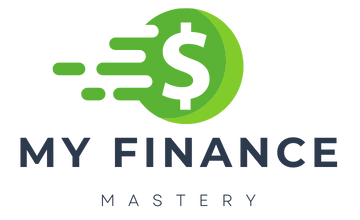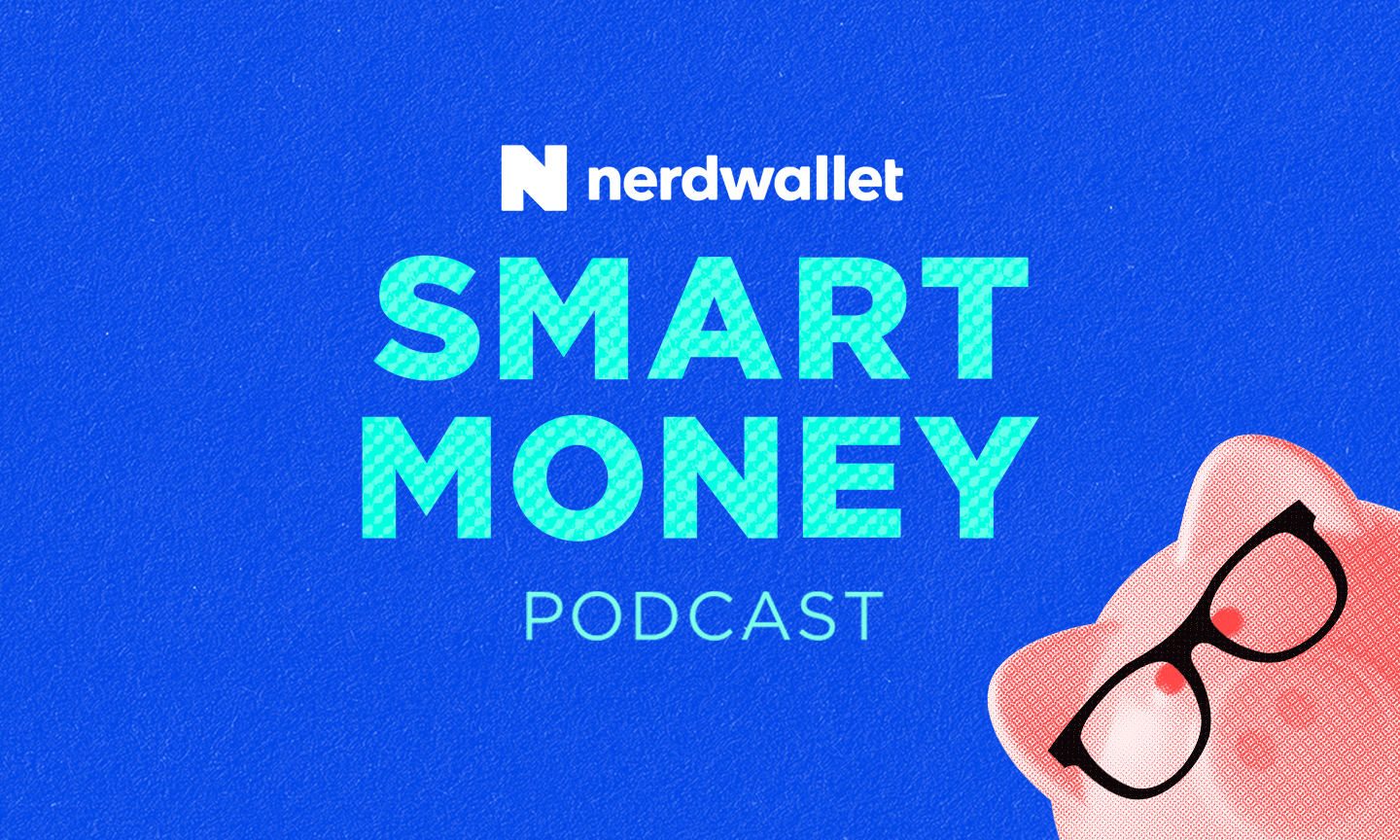Welcome to NerdWallet’s Smart Money podcast, where we answer your real-world money questions. In this episode:
Learn about the Chase Sapphire Preferred card’s limited time sign-up bonus and understand the impact of Federal Reserve interest rate changes.
What is the economic impact of lowering interest rates? Does lowering interest rates increase people’s spending power? Host Sean Pyles leads discussions around the Chase Sapphire Preferred card and the Federal Reserve’s interest rate adjustments to help you understand how to optimize travel rewards and navigate economic shifts. Travel Nerds Sally French and Meghan Coyle start the episode with a discussion of a limited time sign-up bonus for the Chase Sapphire Preferred card, offering tips and tricks on integrating the card into a long-term financial strategy.
Then, NerdWallet’s Senior Economist Elizabeth Renter joins Sean to discuss the impact of lowering interest rates. They delve into how the Federal Reserve uses interest rate changes to manage inflation and employment, how changing rates can stimulate economic growth, and the implications of recent Federal Reserve rate cuts on the broader economy.
Check out this episode on your favorite podcast platform, including:
NerdWallet stories related to this episode:
Auto loans from our partners
4.5
NerdWallet’s ratings are determined by our editorial team. The scoring formula incorporates coverage options, customer experience, customizability, cost and more.

4.5
NerdWallet’s ratings are determined by our editorial team. The scoring formula incorporates coverage options, customer experience, customizability, cost and more.
4.0
NerdWallet’s ratings are determined by our editorial team. The scoring formula incorporates coverage options, customer experience, customizability, cost and more.

4.0
NerdWallet’s ratings are determined by our editorial team. The scoring formula incorporates coverage options, customer experience, customizability, cost and more.
Episode transcript
This transcript was generated from podcast audio by an AI tool.
Credit card sign-up bonuses can be your best chance to nab a ton of points, and every so often an offer comes by that is just too good to pass up. This episode will give you the scoop on a new deal to get loads of points.
Welcome to NerdWallet’s Smart Money Podcast. I’m Sean Pyles. This episode we answer a listener’s question about why the Federal Reserve changes interest rates even when it doesn’t seem fair. But first, travel Nerds Meghan Coyle and Sally French are here to chat about a new limited time offer for people who are thinking about getting a new travel credit card. Meghan and Sally, nice to have you back.
Great to be here as always.
Okay, so what card are we talking about here?
We are talking about one of the most popular travel credit cards out there, the Chase Sapphire Preferred card. It has a limited time sign-up bonus right now: not only will you earn 60,000 Chase Ultimate Rewards points, but you’ll also earn up to $300 in statement credits on Chase Travel purchases within your first year. That’s only if you apply while this offer is still available. It’s on the NerdWallet website as of October 14th, 2024. You’ll need to spend $4,000 in purchases in the first three months from the account opening.
Keep in mind the details of this and other limited time offers discussed in this episode are valid as of October 14th, and may have changed since this podcast episode was released.
And I do want to note at the outset that Chase is indeed a NerdWallet partner, but this comes up often. They’re not paying us to talk about this offer. They don’t influence how we’re about to talk about them. Meghan and I were just thinking, wow, this truly is an incredible offer and we want to share it with Smart Money listeners.
And the high sign-up bonus that we’re just about to talk about is so key to maximizing your travel strategy. You can earn points through everyday spending, but typically it’s going to take so much spending to actually get there. For most people, the biggest influx of points they’ll ever receive in their lifetime is through sign-up offers like this. You can get other sign-up offers at other times of the year, but this one is just so good.
I do just want to emphasize that while this limited time offer is really great and one of the best ones we’ve seen, NerdWallet does not recommend applying for a card simply for these limited time offers. You really want to consider a card that fits long-term in your wallet. Of course, this card very well may be with the bonus points on travel and dining, a lot of people are looking for that.
Okay, you guys are in full Nerd mode over this deal. I love it. So Meghan and Sally are going to do a deep dive into this card and who should apply for it. And even if you already have this card, I’ve heard that there are some special opportunities for existing card holders as well.
Yes, even if you already have this card or some of the other popular Chase Travel cards, we’ll talk about ways to take advantage of a special promotion for Chase Travel bookings that’s running now through January 2025. The only caveat is that these are targeted, so we’ll get into what all of that means later on.
Even if you’re not interested in applying for a new Chase Sapphire Preferred, there are other Chase offers that you might be eligible for, and of course, we will have tips for how to use Chase Ultimate Rewards for their maximum value.
Well, Meghan and Sally, I guess I’ll let you guys take things from here.
Thanks, Sean. I’m super excited about this offer. Sally, it’s been a while since we’ve seen one on this card.
Yes, and I am excited because this is the first card we recommend to beginners. It has a relatively low annual fee, which is great in comparison to those cards with many hundreds of dollars in annual fees, but it also earns transferable points. Now these are easy to use, but there are people who want to keep it simple and book in the Chase Travel Portal where you also get an excellent redemption rate, 1.25 cents per point.
Of course, if you do want to transfer to partners, do that too. We’ve seen transfer redemptions worth 2 cents per point and sometimes even more.
Yes, and we’ll talk about all of that in just a bit. Let’s go over the basics first. What should people know about this card?
It’s important to know the fee is $95. It’s also important to know how flexible its points are. They’re also quite easy to earn. With this card you actually earn bonus points on certain categories. Those categories are all travel purchased through Chase, dining, which includes eligible delivery services and takeout even, select streaming services as well as online grocery purchases. It doesn’t include some stores like grocery purchases online at Target, Walmart, and wholesale clubs.
And it’s worth mentioning that any of these bonus points you’re earning through any of these categories, those are on top of the sign-up bonus. For example, let’s say you spend $300 on a hotel booking through Chase Travel. You’ll also earn five points per dollar on that. So that’s 1,500 points right there and you’ll get the up to $300 back as a statement credit.
What’s important to know about this statement credit is it’s just really flexible. I see so many other cards out there on the market that tend to feel like these glorified coupon books, because there’s so many terms of you need to use the credit in a certain period and only at a certain store and only up to a certain amount. And there are definitely terms with this $300 statement credit, but it is so flexible and covers so many things, not just one single store, which is what I really like about this credit.
I do want to pivot slightly to talk about another offer for existing cardholders. Meghan, you mentioned earlier this offer is targeted, that basically just means some cardholders are eligible. Unfortunately, some are not. There’s one offer for bookings made now through January 2025. Chase wants to introduce you to using their travel portal. So if you are an eligible card member who books for the first time on Chase Travel, you can earn 20,000 points on hotel purchases or 10,000 points on non-hotel purchases.
Another offer for repeat bookers can earn a hundred-dollar statement credit or 10,000 points on hotel purchases booked through Chase Travel. You have to be eligible. You also have to register through a link by January 31st, 2025. There are some minimum spend requirements. There are dates to know. We’re going to put that link and all the other relevant information in the show notes.
And keep in mind there are some drawbacks to using the Chase Travel Portal to book travel. One, you won’t earn hotel points on the stay, so you won’t be able to put in your Marriott loyalty account and earn Elite night credits. You won’t earn the Marriott points and if you do have Elite status, your benefits won’t be recognized. It also has the potential to add complications if you need to change your booking. Because you’re introducing this middleman, Chase Travel is that third party, and you’ll have to go through them to get a cancellation or a change processed and things can get lost.
All that said, I would still say it’s worth it to use these credits. I mean, 20,000 points for a first-time booker, a $300 travel credit—those things would take a really, really long time to earn on your own. This promotion would be a great way to do that. I actually use the hotel credit, which is one of the annual benefits on this card. It’s $50 towards a hotel booking that you book through Chase Travel, and it’s great for just a one-off hotel stay.
Absolutely. I love it. And I do really want to echo your point about the third-party middleman. There is, I’ve felt, just a little bit of an annoyance when you have to go through Chase to see if your hotel can be canceled, and then they just end up going to the hotel directly. And then of course, the fact that you mentioned you can’t earn hotel brand points on the stay, I guess it would be too good to be true. You can’t double dip.
There are other reasons why we really like this card beyond even just the spending rewards, like the access to the hotel and airline transfer partners. Those can make your points so much more valuable. NerdWallet has a list of all of the transfer partners on its website, but I’ll give you an example. One of them is World of Hyatt. You can transfer your points one-to-one from Chase to World of Hyatt. NerdWallet values World of Hyatt points at 2.2 cents. That is just one way you can make your points even more valuable. There’s also benefits like primary rental car coverage, which can be super valuable, so don’t overlook this card’s other benefits.
And I’d a hundred percent recommend even if you already have this card, to look further at the transfer partners that Chase has. There are some really, really good ones. I also love Hyatt. I also really like Southwest. Their points are worth about 1.5 cents for airline bookings and that’s a better rate than you would get in the Chase Travel Portal. So that’s another way you can really maximize the points you’re earning on this card.
Yeah, if you’re flying Southwest often, that can be a really smart way. Just transfer your points over to Southwest. You don’t necessarily want to be doing this if it might just be one $49 flight. It’s a lot of work to create an account and transfer. Meghan, you know we both love Southwest, so it’s great that that’s a transfer partner.
If you’re thinking about any of these transfer partners or getting this card, you’ll also want to think about what other cards you already have and how this one might complement them.
Meghan, it sounds to me like you’re talking about the Chase trifecta.
Yeah, you’ve heard of this, you know this so well. It’s basically a set of three cards that all earn Chase Ultimate Rewards points. Usually there’s some type of cashback card in there, like the Chase Freedom Unlimited or Chase Freedom Flex, or a business card for some of the business owners who are listeners and might qualify for one of those cards. We’ll have a lot more information about what this Chase trifecta is and whether the Chase Sapphire Preferred could fit for you.
That’s exactly right. And other cards like the Chase Freedom Flex, that has rotating categories where you can earn up to 5% on up to $1,500 in combined purchases that quarter, which you activate in certain bonus categories. If you really can align your road trip with the category where the bonus is gas, then that’s a great way to wrack up even more points.
All right, that’s it. Remember, this sign-up bonus won’t be around forever, and you’re only eligible if it’s been at least 48 months since you’ve received a sign-up bonus for any Chase Sapphire card, whether that’s the Chase Sapphire Reserve or the Chase Sapphire Preferred. Check out the show notes to find more information about the Chase Sapphire Preferred card and your eligibility. You can also just search online for NerdWallet Chase Sapphire Preferred and you’ll find all the information right there. All right, Sean, get back in here.
I’m here. I’ve actually been here the whole time listening to you and Sally.
Silently lurking in the background, learning so much. Well, Sally, Meghan, thank you so much for bringing all of your credit card expertise to Smart Money.
Thanks so much for having us, Sean.
Great to be here as always.
Before we get into this week’s money question segment, we have an announcement. We are running another book giveaway sweepstakes ahead of our next Nerdy Book Club episode. Our next guest is Jessica Spangler, author of Invest Like a Girl, which shares investing and money tips geared toward women.
To enter for a chance to win our book giveaway, send an email to [email protected] with the subject book sweepstakes during the sweepstakes period. Entries must be received by 11:59 PM Pacific Time on October 25th. With that, include the following information, which is your name, first and last, your email address, your zip code, and your phone number. For more information, please visit NerdWallet’s official sweepstakes rules page.
This episode’s money question is coming up in a moment. Stay with us. We’re back and answering your real-world money questions to help you make smarter financial decisions. This episode’s question comes from Kayla who left us a voicemail. Here it is.
Hey Nerds, this is Kayla from Sacramento, and my money question is, what is the economic impact of lowering student loan interest and mortgage interest? It seems to me that dropping the interest rates on student loans, which are somewhere up near 7%, and on mortgages would inject more money into the economy and allow for bigger investments in businesses. People would be able to create businesses, they’d be able to generate wealth, they’d be able to invest.
So what’s the problem? Why doesn’t the government just give us our money back? And why are we seeing our money eaten up by banks where we pay maybe a mortgage payment where $1,200 goes to a bank and then $500 goes toward your actual asset? It doesn’t make sense to me, so I’m curious what the bigger economic impact is if the government can just give us our money back by lowering interest rates on the two biggest expenses that millennials and younger are facing these days. Thanks. Looking forward to hearing the answer.
To help us answer Kayla’s question, on this episode of the podcast, we are joined by NerdWallet’s senior economist, Elizabeth Renter. Elizabeth has been writing about economic trends and data for more than 10 years, and her work has been featured by CNBC, The New York Times, the Today show, and elsewhere. Elizabeth, welcome back to Smart Money.
Hey Sean. Thanks. Happy to be here.
Elizabeth, the Federal Reserve recently cut the federal funds rate, as we’ve all heard about so much, so I thought that now would be a great time to take on a question like Kayla’s. Over the past few years when interest rates were on the rise, I think a lot of people felt like our listener, that rising interest rates were kind of unfair. As they said, just give us our money back. So to start, can you give us a sort of economics 101 about why the Fed raises and lowers interest rates?
In this context and in others, you can think of interest as the price of money. We essentially charge this price when we put our money in a savings account or a CD, and the bank pays us for that in the form of interest. Lenders charge interest to us when we borrow from them, whether for a home loan, a car loan, a student loan, or in the form of credit, on a credit card, for example. And there are many interest rates across the economy. The one the Fed influences is known as the federal funds rate, and it’s actually a rate that banks charge one another on overnight loans to each other.
Because banks are having to pay higher interest on those loans, they charge higher interest to us. And in this way, the Fed’s rate hike or the rate cut trickles down, influencing rates across the economy and influencing the economy as a whole. The Fed uses this influence as a tool to achieve its two jobs, or what you might’ve heard referred to as their dual mandate, which is stable price growth or inflation and full employment.
And what about what I think Kayla is trying to get at with their question? What do they get out of this? What do banks and the Fed get from higher rates?
Well, let’s start with the Fed. As I mentioned, they use their influence on rates to steer the economy, namely as it relates to inflation and employment. When they want to encourage faster growth, they lower interest rates to make it cheaper to borrow. This means people are more apt to make big purchases because the loans are less expensive, and businesses are more likely to hire and expand. But if the economy is growing too quickly, inflation can rise. And this is what we saw in the past few years, where the Fed began raising rates to slow the economy down and get inflation under control.
The result of these interest rate hikes is that people are less likely to take out that home loan, and businesses are less likely to borrow too. This cools price growth and tames inflation.
But from a consumer standpoint, it can be painful to experience. Let’s talk about banks. Higher interest rates mean that they’ll charge more for the loans that we all take out, which again, to Kayla’s point, can feel unfair.
In addition to the influence on rates from the Fed, lenders, whether banks or otherwise, charge interest to compensate them for going without that money. They could invest that money elsewhere and make money, but they’re loaning it to you, so they want to be compensated for that. That’s known as their opportunity cost, and they’re taking a risk. To illustrate this, as an example, unless you and I are really close, I’m probably not going to lend you a hundred dollars. Sorry, Sean, but if you’re—
Oh, I thought you would lend me a hundred dollars—
I would probably lend you a hundred dollars.
But if you’re an acquaintance and you offer to pay me $120 for that initial $100 in six months, I might be open to it. On the other hand, if you’re a complete stranger, I might want more than that additional $20 because I’m taking a bigger risk. I don’t know you, you could take my money and run. So for a complete stranger, I’m going to charge more interest relative to the larger risk that I’m taking. Banks do something similar. Not only are they going to charge interest just for the sake of lending money, but that interest could be more depending on the risk involved and the length of time that you’re borrowing.
Yeah, that makes sense. Okay, so Elizabeth, we are talking at a turning point. As we mentioned earlier, for the first time in years, the Federal Reserve just cut interest rates and it seems like more cuts might be on the way. So how might this affect the broader economy?
Well, the Fed is declaring victory on their fight against inflation, so they’re lowering rates to inject some energy back into the economy. As I mentioned, this will make it more affordable to borrow, so people will take out loans to make big purchases and businesses will expand. It will take some time for the Fed to lower rates. This is typically a several months-long process, and it will take time for these lower rates to extend across the economy. But ultimately, when rates are at a more sustainable level, which is not too high, but not too low, we’ll reap the benefits of both moderate inflation and moderate rates. Not too much of one or the other.
So our listener, Kayla, suggested that lower rates could mean more money in our pockets for investing, or could make home buying easier. What are your thoughts about that?
They’re right. Lower interest on a car or a credit card, for example, can mean lower, more manageable payments, and the money saved can be used for other things. But high rates do serve to help tamp inflation down. This recent period of high rates has shown that to be true. So while it’s painful and we don’t really like it, high rates play a role in keeping the prices on our everyday items from ballooning out of control. And a side note on housing, because this is kind of a tricky related topic right now, lower interest rates on mortgages will definitely make home ownership more affordable. But the current affordability crisis in the housing market is largely driven by prices, not rates.
And these high prices are the result of a low supply of homes for sale. Until many, many more homes hit the market, they’re going to remain expensive. And as with auto and personal loans, lenders offer different rates on mortgages. So when you’re dealing with something as pricey as a home, especially now, shop around for rates. We actually have a tool for that at NerdWallet. If you Google NerdWallet Compare Mortgage Rates, we can include a link for that in today’s show notes.
Yes, we can. One thing that we haven’t touched on is student loans. Kayla asked about those as well. Elizabeth, what can you tell us about interest rates on those?
Student loans, and specifically federal student loans, are unique. Interest rates on these are set just once a year, and everyone taking out the same type of loan that year pays the same interest. That interest rate sticks around until you pay it off. While private student loan rates may come down as the Fed cuts, any impact to federal loans won’t happen until the next school year. A cautionary note for folks with current federal student loan debt that are watching private rates, or those considering a private student loan: private loans generally have higher interest rates than federal, particularly for the average borrower. And private lenders care a lot about their risk. They care more about your credit history and income when they’re setting their rates.
Also, federal student loans come with certain protections and flexible repayment options. For all of these reasons overall, we recommend you prioritize federal student loans over private for these protections and benefits.
So lower interest rates don’t mean that everything is suddenly hunky-dory again, right? We’re not going back to the boom days of 2021 where we all had money to throw around. Are there any risks to lower interest rates or could this pose new challenges to consumers that they might not be expecting?
Good question, and I’m really glad you used the phrase hunky-dory.
There are some risks associated with low interest rate environments. Part of what we already discussed: low rates lead to economic growth, which can lead to inflation, but low rates can also tempt people to take on more debt than they otherwise would. For borrowers considering a mortgage or a car note, don’t let lower rates lure you into stepping outside of your budget. Further, lower rates also mean lower returns for us on savings accounts, certificates of deposit, and even treasuries, which are pretty low-risk investments.
So this could move some people into higher-risk investments, and higher risk means there’s a greater chance of loss.
Well, Elizabeth Renter, thank you as always for talking with us on Smart Money.
Absolutely my pleasure, Sean. Thank you.
That’s all we have for this episode. Remember, listener, that we are here for you and your money questions, so send them our way. You can turn to the Nerds and call or text us your questions at (901) 730-6373. That’s (901) 730-N-E-R-D. You can also email us at . Visit nerdwallet.com/podcast for more info on this episode. And remember, you can follow the show on your favorite podcast app, including Spotify, Apple Podcasts, and iHeartRadio, to automatically download new episodes.
Here’s our brief disclaimer. We are not financial or investment advisors. This nerdy info is provided for general educational and entertainment purposes, and may not apply to your specific circumstances. And with all that said, until next time, turn to the Nerds.













